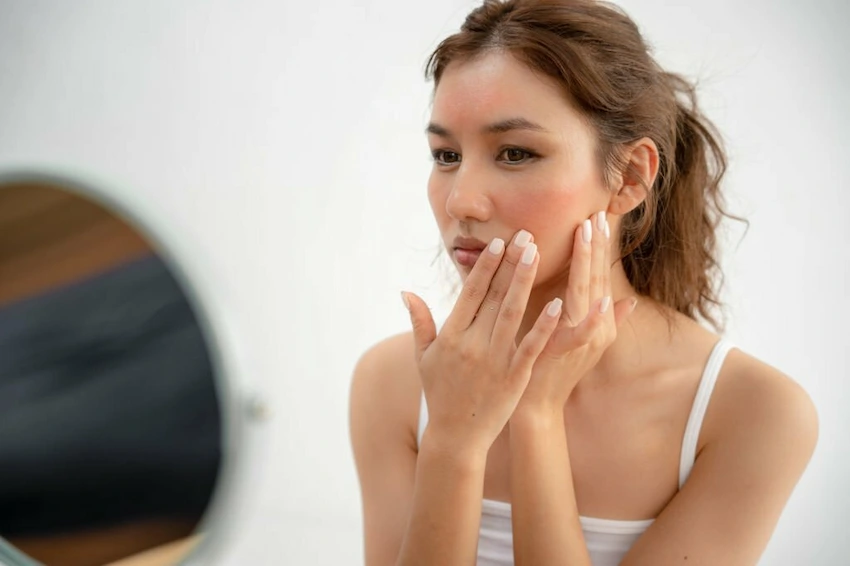Sweating is a natural bodily function, and while it’s essential for regulating body temperature, it can sometimes lead to unwanted consequences. One such consequence is Milialar, a common skin condition that occurs due to excessive sweating, particularly in hot and humid climates. Although it’s not a life-threatening issue, it can be uncomfortable and even painful. Milialar, also known as Miliaria, prickly heat, or sweat rash, can affect individuals of all ages but is more common among infants and young children. In this article, we’ll dive into the world of Milialar, exploring its different types, risk factors, complications, home remedies, prevention strategies, and treatment options.
Types of Miliaria
It manifests in three primary forms, each with its unique characteristics and symptoms. Understanding these types is crucial for effective solution:
1. Miliaria Crystallina: This type is often seen in infants and young children. It’s characterized by tiny, clear blisters that are usually painless. These blisters form when sweat accumulates just beneath the surface of the skin.
2. Miliaria Rubra: Miliaria rubra, commonly known as heat rash, can affect both children and adults. It appears as small, red bumps and is often accompanied by itching and a prickling sensation. It may cause discomfort in some situations.
3. Miliaria Profunda: This is the rarest and most severe form of Milialar. It typically affects individuals engaged in strenuous activities, like athletes or soldiers. Miliaria profunda manifests as deep-seated, non-sweat-filled bumps that can lead to infections if not properly managed.
Risk Factors for Miliaria
Several factors can increase the risk of developing Milialar. Taking preventative action is much easier when you are aware of these risk factors:
- Hot and Humid Climates:Due to increased sweating, living in areas with high temperatures and humidity might increase the risk .
- Infancy: Infants and young children are particularly prone to Milialar because their sweat glands are not fully developed.
- Strenuous Activities: Engaging in physically demanding activities that lead to excessive sweating can exacerbate the condition.
- Tight Clothing: Wearing tight-fitting clothing can block sweat glands, making it difficult for sweat to escape and leading to Milialar.
- Certain Medical Conditions and Medications: Certain health conditions, like obesity, and medications that affect sweat production can increase the risk of it.
Complications of Miliaria
While it is generally a mild condition, it can lead to rare complications, such as infections, heat exhaustion, and even heat stroke. Infections may occur when sweat ducts become blocked and inflamed, leading to pustules. Heat exhaustion and heat stroke are more severe complications that can be life-threatening, requiring immediate medical attention.
Miliaria Home Remedies
For mild cases, there are several home remedies that can provide relief:
- Cool Showers or Baths: Taking cool showers or baths at temperatures between 70-75 degrees Fahrenheit can help alleviate symptoms. Adding a few drops of essential oils like lavender or peppermint to the bathwater can further reduce itching and inflammation.
- Cotton and Loose-Fitting Clothing: Opt for loose-fitting, cotton clothing that promotes skin dryness and breathability.
- Cool Compresses: Apply cool sponge compresses or use a damp washcloth on the affected area multiple times a day to soothe the skin.
Prevention of Miliaria
Preventing Milialar is often more straightforward than treating it. Here are some tips for keeping the condition at bay:
– Stay Hydrated: Proper hydration is essential, especially in hot and humid conditions. It helps regulate body temperature and reduces the likelihood of excessive sweating.
– Powder Application: Consider using a sweat-absorbing powder to maintain dryness and freshness.
Treatment
The Milialar treatment varies according to the level of seriousness of the condition:
- For mild cases, self-care measures such as staying cool, wearing appropriate clothing, and using sweat-absorbing powders are usually sufficient.
- Severe cases may require medical treatment, including topical corticosteroids to reduce inflammation, antibiotics for infected blisters, and oral antihistamines to relieve itching and inflammation.
- In rare instances, hospitalization may be necessary, especially if complications like heat exhaustion or heat stroke occur.
Symptoms
Common symptoms of it include small, clear or red bumps, prickling sensations, pain, itching, redness, warmth, sweat-filled blisters, discomfort, and rashes. These symptoms typically appear on the face, neck, chest, and back. Infants and young children with Milialar may become irritable due to the discomfort caused by the condition.
Conclusion
In conclusion, Milialar is generally not a severe medical condition and often resolves on its own within a few days. It’s crucial to be aware of the types, causes, symptoms, and effective home remedies to manage and prevent discomfort. However, if your condition is severe or if complications arise, it’s advisable to seek medical advice. The key is to stay cool, dry, and comfortable, especially in hot and humid conditions, to minimize the risk.
Wants to explore something different – Meet Incidentalseventy: A SpongeBob Surprise








Leave a Reply